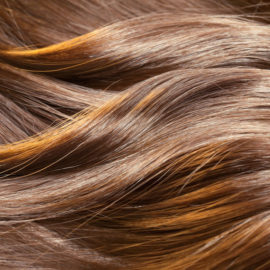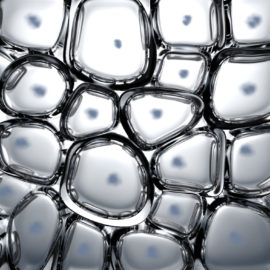The skin barrier care has emerged as one of the most prevalent concerns of cosmetic consumers and, therefore an increasingly important aspect of today’s cosmetic innovation efforts.
The more we learn about the composition and needs of the skin barrier care as a whole, the more important lipids become in cosmetic science. However, as society evolves new challenges and biological targets are emerging. In this regard, due to the increasing urbanisation at a global scale, the effect of pollution on the skin has been studied from many different angles. In this article we take a look at a new milestone in cosmetic research in skin barrier care: skin lipid peroxidation and its impact on lipids and the proper construction of a healthy skin barrier.
It is already known that lipid peroxidation is behind premature ageing and increased transepidermal water loss (TEWL). Its direct impact on the skin microbiota has also been studied, an increasingly relevant topic for beauty consumers, and directly related to today’s prevailing holistic view of skin health.
In response to this, there are considerable challenges, such as stopping the damaging effects that factors such as atmospheric pollution can have on all layers of the skin barrier, starting with the most superficial layer where the microbiome is located. In this regard, the most evolved cosmetic consumer understands that maintaining a healthy microbiome involves disrupting it as little as possible, while allowing its capacity for self-balancing to act.
Consumer needs for skin barrier care are thus evolving to address the integrity of the skin barrier against damage caused by pollution. And lipid peroxidation is at the heart of these phenomena.
However, what is the role of lipid peroxidation in this process and what cutting-edge solutions are available today to preserve the integrity of the skin? We take a closer look.
Content
What is lipid peroxidation and how does it happen?
Lipid peroxidation is a biochemical process in which lipids are oxidised by reactive oxygen species (ROS) and by-products such as free radicals. This process is key to skin health, since long-chain lipids such as triglycerides and ceramides play the most important role in the barrier function (brick & mortar) of the skin structure.
The process of lipid peroxidation is activated when ROS attack the double bonds of lipids, resulting in lipid free radicals. These, in turn, can react with molecular oxygen to form lipid peroxides, highly reactive compounds capable of propagating the peroxidation chain. As for the causes of lipid peroxidation, it can be triggered by a variety of factors, mainly ultraviolet radiation, environmental pollution, and oxidative stress, all capable of creating the free radicals and reactive oxygen species that cause oxidative damage to lipids.
Effects of lipid peroxidation on the skin
The main effect of lipid peroxidation is the degradation of the structure and function of cell membranes in lipids. For example, squalane, one of the most common components of skin sebum, is highly susceptible to oxidation, being transformed into hydroperoxysqualene (Sq-OOH). Its oxidation causes significant damage to cell membranes, altering the structural and functional integrity of skin cells. More specifically, oxidised squalene is involved in UV-induced epidermal cell changes and skin disorders. Besides, it has been shown to induce skin roughness, wrinkle formation and other signs of skin damage and ageing.
It is therefore known that lipid peroxidation can compromise the skin’s function and barrier care. This is because the skin barrier is mainly built up of long-chain lipids to perform its protective function, since they play a crucial role in proper skin permeability.
Briefly explained, long-chain lipids are the most important for the protective function of the lipid barrier, and lipid peroxidation prevents precisely lipid elongation. In other words, in skin disorders where lipid chain length is reduced, a decrease in barrier function due to altered lipid packaging occurs, resulting in a reduction of the brick & mortar effect.
At the same time, lipid peroxidation is also a concern because of its ability to form free radicals in the skin, triggering a series of events that lead to the degradation of collagen and elastin, important proteins for the skin’s structure and elasticity.
SHILOXOME™: the revolutionary natural active ingredient that protects against lipid peroxidation caused by pollution.
Given the increasing importance of skin barrier care and solutions that go beyond the surface, Provital has developed Shiloxome™. This active ingredient is able to improve the lipid profile of the stratum corneum, playing a crucial role in restoring the lipid barrier, boosting moisture retention and improving skin elasticity and suppleness.
Shiloxome™ not only restores the protective function of the lipid barrier, but also acts as a powerful ally in the fight against lipid peroxidation and, as a consequence, against the visible signs of ageing.
This is a disruptive innovation on several levels, starting with its biotechnological origin. Shiloxome™ represents the first “ecosystem ingredient” developed using the new Provital’s Triplobiome™ Technology.
This innovative biotechnology platform is able to use plant endophytes as a source to produce new and powerful actives of natural and sustainable origin that go beyond the traditional ferments used in beauty so far.
Shiloxome™ is the result of isolating the endophytic yeast of the Kwoniella mangroviensis species from inside the bark of the cork oak (Quercus suber). An ingredient that harnesses the protective power of the bark’s endophytes to create a well-aging and restructuring active ingredient for the skin barrier care that acts directly against lipid peroxidation.
Having been tested by an extensive and innovative in vivo lipidomic study on 60 female volunteers living in a polluted area, Provital has taken a major step forward in the science dedicated to the study of the lipid barrier.
The results of this study showed that the active prevents pollution-induced lipid peroxidation and, consequently, the increase of the total chain length of the entire lipidome. More specifically, 328 different lipids were identified, of which, after a bioinformatic analysis, 114 significantly different lipids were detected with Shiloxome™ versus the placebo, for which their level of peroxidation was counted. Next, a whole lipidome enrichment analysis, assessing different lipid profile properties (lipid class, chain length and unsaturation), revealed that Shiloxome™ improves the overall lipid profile of the skin after 56 days of treatment.
The lipidome profile is thus shifted towards lipids with longer chain lengths, ultimately improving the protective function of the skin barrier in polluted environments and contributing to the restructuring of youthful, healthy skin.
Shiloxome™ therefore stands as one of the most promising innovations at the intersection of cosmetic science and nature. Its deep protective action represents a new milestone for cosmetic products that can offer consumers who are increasingly informed and concerned about consuming highly effective, but also sustainable cosmetics and who understand the links between skin health and naturalness.
No comments yet
There are no comments on this post yet.





Leave a comment